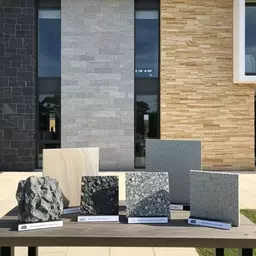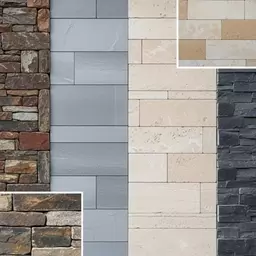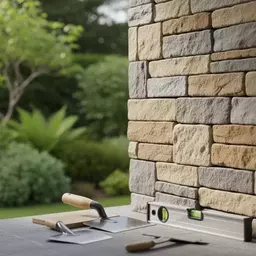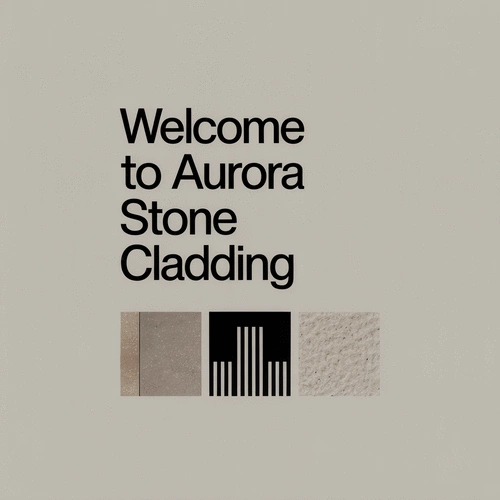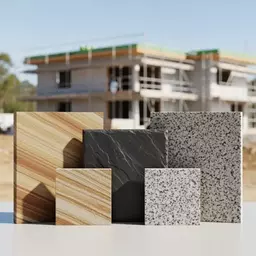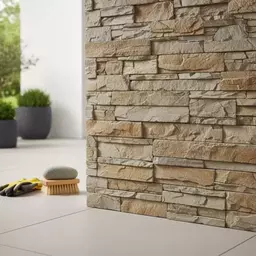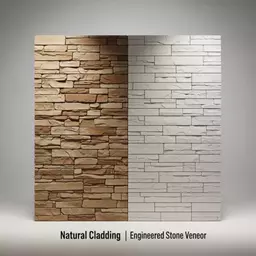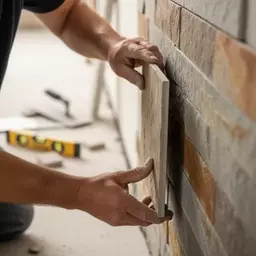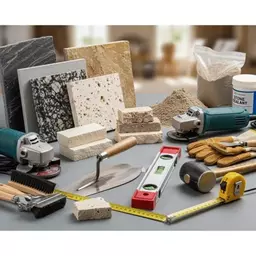What if your next home improvement could help save the planet? Sustainable stone cladding is not just a trend; it's a commitment to a healthier future for our environment. By understanding the benefits and practices of sustainable materials, you can create a beautiful space that also reflects your values.
What You Will Learn
- Sustainable stone cladding involves using materials that minimize environmental impact while enhancing aesthetic appeal.
- Locally sourced stones help reduce transportation emissions and support local economies.
- Utilizing eco-friendly materials can lower maintenance needs and enhance indoor air quality.
- Key sourcing steps include identifying reputable suppliers and understanding their sustainability practices.
- Investing in sustainable materials can increase the marketability of your property.
- Considering the carbon footprint of your materials is essential in making eco-conscious choices.
- Creating a checklist for sourcing can simplify decision-making and ensure sustainable practices.
The Pillars of Sustainable Stone Cladding
Understanding the core elements that define sustainable stone cladding helps in making eco-conscious choices for your building projects.
What Makes Stone Cladding Sustainable?
- ✓ Natural options: Granite, Limestone, Sandstone
- ✓ Engineered stone with recycled materials
- ✓ Ethical harvesting practices
Benefits of Eco-Friendly Materials
- ✓ Durability: Longer lifespan, fewer replacements
- ✓ Lower maintenance requirements
- ✓ Enhanced indoor air quality
Key Sourcing & Verification Steps
- ✓ Identify reputable suppliers
- ✓ Ask about sourcing and certifications (e.g., Global GreenTag)
- ✓ Request supply chain transparency
Carbon Footprint Considerations
- ✓ Assess travel distance (quarry to site)
- ✓ Evaluate energy-efficient production methods
- ✓ Consider material lifespan and recyclability
Understanding Sustainable Stone Cladding in Australia: An Overview
When I think about sustainable stone cladding, I’m reminded of how vital it is for our environment and our homes. Sustainable stone cladding refers to the use of stone materials that are sourced and processed in a way that minimizes environmental impact. This approach not only prioritizes the health of our planet but also enhances the aesthetic appeal of any structure. As homeowners, builders, and architects, understanding this concept is crucial in making informed decisions for our projects.
At Aurora Stone Cladding, we believe that every piece of stone carries a story. By choosing sustainable options, we contribute to a legacy that honors our natural resources and promotes responsible design practices. So, what exactly makes stone cladding sustainable? Let’s dive deeper!
What is Sustainable Stone Cladding?
Sustainable stone cladding encompasses a range of materials that are both environmentally friendly and durable. This includes natural stones like granite and limestone, as well as engineered stones that are designed with sustainability in mind. These materials are typically sourced locally, reducing transportation emissions and supporting local economies. For a deeper dive into material choices, consider exploring the differences between natural vs engineered stone cladding.
- Natural stone options: granite, limestone, sandstone
- Engineered stone varieties that use recycled materials
- Ethical harvesting practices to protect ecosystems
Choosing sustainable stone cladding means embracing materials that not only look good but also feel good for the environment. From design to installation, every aspect is intertwined with our commitment to sustainability!
The Importance of Sustainability in Construction Materials
In today’s world, the push for sustainability in construction materials is more important than ever. With the ongoing climate crisis, it’s essential that we consider the environmental impact of our building choices. Using sustainable materials can significantly reduce our carbon footprint and promote a more eco-friendly industry. For instance, sustainable stone cladding helps in:
- Minimizing waste during production
- Reducing energy consumption
- Enhancing energy efficiency in buildings
By incorporating these materials into our projects, we can foster a healthier planet. It’s about making choices that not only benefit us now but ensure a better future for generations to come!
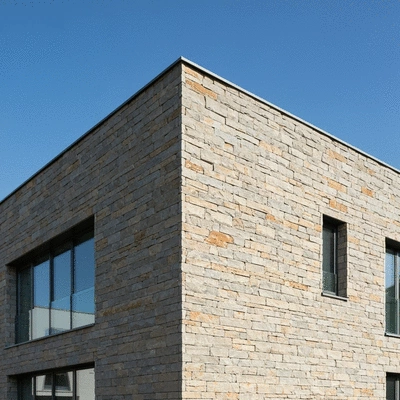
Key Benefits of Using Eco-Friendly Materials in Construction
Utilizing eco-friendly materials in construction offers numerous advantages that go beyond just aesthetics. When you opt for sustainable stone cladding, you’re not just beautifying your space; you’re also embracing a host of benefits:
- Durability: Sustainable stones often last longer, saving you money on repairs and replacements.
- Lower maintenance: With the right materials, upkeep becomes easier and less frequent.
- Enhanced air quality: Eco-friendly materials can contribute to a healthier indoor environment.
As I guide clients through their stone selection process at Aurora Stone Cladding, I find that understanding these benefits helps them appreciate the value of making sustainable choices. It’s not just about the immediate impact but also the long-lasting effects that resonate with our commitment to sustainability. For practical tips on how to care for these materials, check out our guide on natural stone cladding care tips.
Unfortunately, I couldn't find a specific YouTube video titled "How to Source and Verify Sustainable Stone Cladding Materials in Australia: A Practical Buyer’s Guide" that meets the criteria. However, for general guidance on stone cladding, you might consider using a video like "Stone Wall Cladding, Alternative Building Material" by Limestone Australia, which discusses various types of stone cladding materials. Here is the embed code for that video:
Quick Poll: Your Thoughts on Sustainable Stone Cladding
As we embrace the importance of sustainability in construction, we want to hear from you! How do you feel about using sustainable materials like stone cladding in your building projects?
Summarizing the Key Considerations for Sustainable Stone Cladding
As we wrap up our discussion on sustainable stone cladding, it's vital to reflect on the essential points we've covered. Sourcing and verification steps are crucial in ensuring that the materials you choose align with eco-friendly principles. From understanding the characteristics of different stone types to the importance of asking the right questions to your suppliers, these initial steps set the stage for a responsible building project.
Choosing sustainable materials isn’t just about meeting compliance; it's about contributing positively to our environment. By opting for eco-friendly stone cladding, you're not only enhancing the beauty of your space, but you're also making a conscious choice to support sustainable practices in the industry. Let’s delve a bit deeper into these considerations.
Recap of Sourcing and Verification Steps
When sourcing stone cladding, the verification process is central to ensuring you make informed choices. Here’s a quick recap of the key steps:
- Identify reputable suppliers with a track record of sustainability.
- Ask specific questions about their sourcing practices and material certifications.
- Request transparency regarding their supply chain and manufacturing processes.
- Understand the certifications that apply to your materials, such as Global GreenTag and GECA.
Each of these steps is designed to empower you as a buyer, ensuring that the stone you select reflects both your aesthetic vision and environmental responsibilities.

The Value of Choosing Sustainable Materials for Your Building Projects
Investing in sustainable materials, particularly in stone cladding, enriches your project in several ways. Firstly, it not only addresses aesthetic desires but also supports long-term durability and reduces the environmental impact of your construction. Imagine a façade that stands the test of time while also contributing to the health of our planet!
Additionally, incorporating eco-friendly materials enhances the overall marketability of your property. Buyers are increasingly looking for homes that reflect sustainability, which means your investment today can yield significant returns in the future.
Understanding the Carbon Footprint of Stone Cladding Choices
Every material comes with its own carbon footprint, and stone cladding is no exception. It’s essential to understand how your choices impact the environment. For instance, locally sourced stones generally have a lower carbon footprint due to reduced transportation emissions. Here’s what to consider:
- Assess the distance your stone travels from quarry to project site.
- Evaluate the production methods used – are they energy-efficient?
- Consider the lifespan of the material and its recyclability at the end of its life.
By understanding these factors, you can make choices that not only beautify your space but also contribute to a sustainable future!
Next Steps for Buyers Seeking Sustainable Stone Cladding
Now that you’re equipped with knowledge on sustainable stone cladding, it’s time to take actionable steps in your sourcing journey. At Aurora Stone Cladding, we're here to help you every step of the way!
Creating a Checklist for Your Sourcing Process
A well-structured checklist can simplify your sourcing process and ensure you don’t miss any critical steps. Here’s a starter list:
- Define your design vision and sustainability goals.
- Research and list potential suppliers.
- Prepare key questions regarding sourcing and certifications.
- Evaluate the materials in person, if possible.
- Confirm installation techniques and maintenance requirements.
Having this checklist will keep you organized and focused on achieving your sustainable building goals!
Encouraging Responsible Choices in Material Selection
As you move forward, remember the impact of your choices. By selecting sustainable stone cladding, you’re not just enhancing your home; you’re also setting an example for others. Share your journey! Talk to your friends and family about your choices and why they matter.
Encouraging responsible choices helps shape a community that values sustainability, paving the way for greener building practices in Australia.
Exploring Educational Resources and Expert Consultations
Lastly, don’t hesitate to seek out resources and expert advice. Whether it’s reading up on stone cladding techniques, attending workshops, or consulting with professionals in the field, education is key to making informed decisions. Here are some resources to consider:
- Local workshops on sustainable building practices.
- Online forums or groups focused on eco-friendly construction.
- Consultations with stone cladding experts like me at Aurora Stone Cladding.
With the right support and knowledge, you're well on your way to making sustainable choices that will beautify and enhance your environment for years to come! To further your knowledge, consider reading about natural vs. engineered stone cladding in terms of sustainability.
Recap of Key Points
Here is a quick recap of the important points discussed in the article:
- Sustainable stone cladding minimizes environmental impact and enhances aesthetics.
- Utilize locally sourced materials to reduce transportation emissions and support local economies.
- Opt for durable eco-friendly materials that require lower maintenance and improve indoor air quality.
- Always verify suppliers' sustainability practices and material certifications when sourcing stone cladding.
- Choosing sustainable options contributes positively to the environment and increases property marketability.
Frequently Asked Questions About Sustainable Stone Cladding
What is sustainable stone cladding?
Sustainable stone cladding involves using stone materials that are sourced and processed to minimize environmental impact, enhancing both the aesthetic appeal and ecological footprint of a building.
What types of materials are considered sustainable stone cladding?
This includes natural stones like granite, limestone, and sandstone, as well as engineered stones made with recycled content. The key is ethical harvesting and production practices.
What are the main benefits of using eco-friendly stone cladding?
Benefits include enhanced durability, lower maintenance requirements, improved indoor air quality, reduced environmental impact (e.g., lower carbon footprint from local sourcing), and increased property marketability.
How can I verify if stone cladding materials are sustainable?
You should identify reputable suppliers, ask about their sourcing practices and certifications (like Global GreenTag), request supply chain transparency, and understand the carbon footprint associated with the material's travel and production.
Does choosing sustainable stone cladding affect the property's value?
Yes, incorporating eco-friendly materials can enhance the overall marketability of your property, as buyers are increasingly seeking homes that reflect sustainability and offer long-term benefits.


